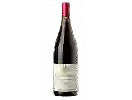
Winery Puits de CompostelleCôtes La Charité Pinot Noir
This wine generally goes well with pork, poultry or veal.
Wine flavors and olphactive analysis
On the nose the Côtes La Charité Pinot Noir of Winery Puits de Compostelle in the region of Loire Valley often reveals types of flavors of red fruit.
Food and wine pairings with Côtes La Charité Pinot Noir
Pairings that work perfectly with Côtes La Charité Pinot Noir
Original food and wine pairings with Côtes La Charité Pinot Noir
The Côtes La Charité Pinot Noir of Winery Puits de Compostelle matches generally quite well with dishes of veal, pork or game (deer, venison) such as recipes of wiener schnitzel or viennese schnitzel, ham and cheese omelette or potjevleesch.
Details and technical informations about Winery Puits de Compostelle's Côtes La Charité Pinot Noir.
Discover the grape variety: Pinot noir
Pinot noir is an important red grape variety in Burgundy and Champagne, and its reputation is well known! Great wines such as the Domaine de la Romanée Conti elaborate their wines from this famous grape variety, and make it a great variety. When properly vinified, pinot noit produces red wines of great finesse, with a wide range of aromas depending on its advancement (fruit, undergrowth, leather). it is also the only red grape variety authorized in Alsace. Pinot Noir is not easily cultivated beyond our borders, although it has enjoyed some success in Oregon, the United States, Australia and New Zealand.
Last vintages of this wine
The best vintages of Côtes La Charité Pinot Noir from Winery Puits de Compostelle are 2014, 2015
Informations about the Winery Puits de Compostelle
The Winery Puits de Compostelle is one of of the world's greatest estates. It offers 6 wines for sale in the of Loire Valley to come and discover on site or to buy online.
The wine region of Loire Valley
The Loire Valley is a key wine region in western France. It follows the course of the Loire River on its Long journey through the heart of France, from the inland hills of the Auvergne to the plains of the French Atlantic coast near Nantes (Muscadet country). Important in terms of quantity and quality, the region produces large quantities (about 4 million h/l each year) of everyday wines, as well as some of France's greatest wines. Diversity is another of the region's major assets; the styles of wine produced here range from the light, tangy Muscadet to the Sweet, honeyed Bonnezeaux, the Sparkling whites of Vouvray and the juicy, Tannic reds of Chinon and Saumur.
The word of the wine: Provignage
A vine reproduction technique that consists of burying a vine shoot that takes root and reproduces a plant with the same characteristics as the vine to which it is attached.














